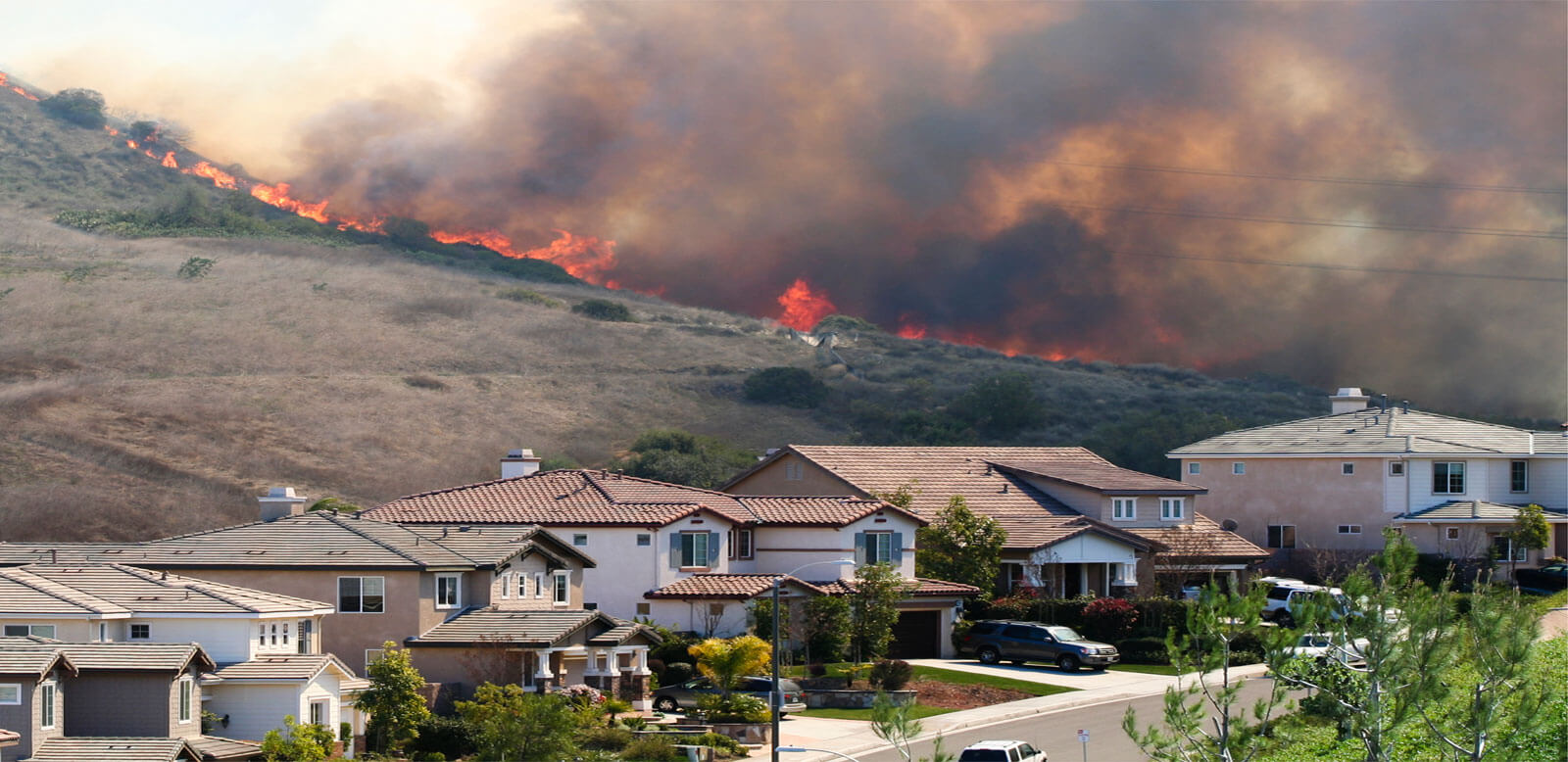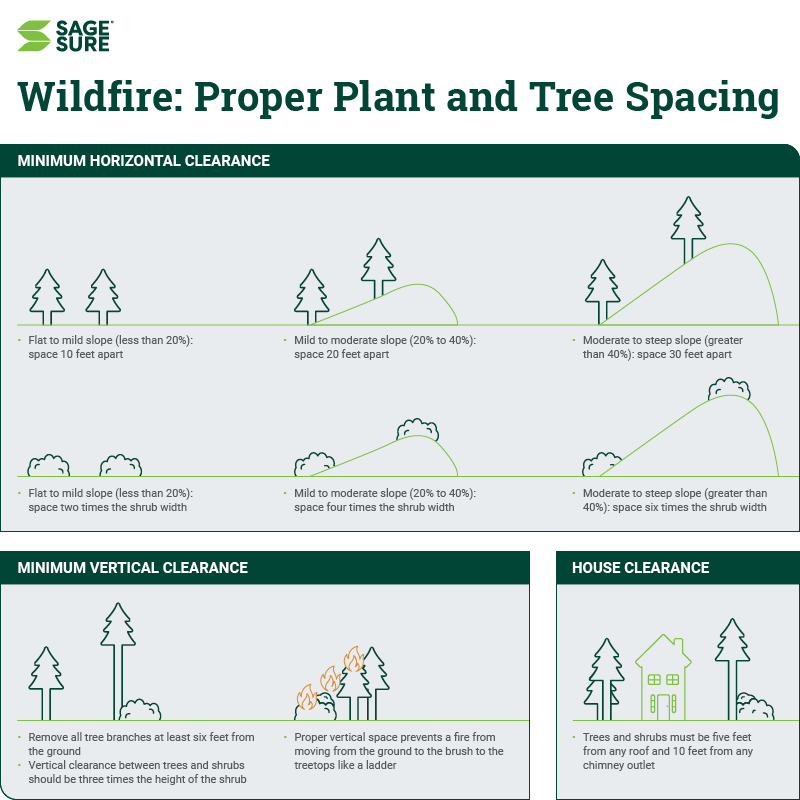
Wildfire preparation: Start with small steps
June 14, 2021 — Disaster insights | Homeowner insights
While most associated with wildfires, California isn’t the only state to experience this natural disaster – 38 states are at risk for wildfires.1 In 2020, more than 58,950 wildfires burned 10,122,336 acres of U.S. land, and projections based on the first half of the year indicate that 2021 will be significantly worse.2
It may seem like a hopeless situation, but you can take steps to make your home less susceptible. You can also educate yourself on the causes and spread of wildfires. More than 90% of wildfires are started by humans.3 Knowing the potential dangers and threats can help stop the spread.
Reduce human harm
Human-sparked wildfires spread twice as fast as those caused by nature and burn more intensely.4 Helium balloons caught on powerlines, cigarettes improperly disposed of, and careless use of fire are more dangerous causes because they can start in any season and ignite in areas where flammable items are in proximity and fuel the spread. Educate yourself on how to properly use fire and decrease accidents to stop fires from starting.
Create a defensible space
Fire needs fuel to spread – grass, trees, shrubs and other combustible material. Creating a defensible space around your home can reduce the threat and spread, either from embers, direct flame or radiant heat. In some states (California Public Resource Code PRC 4291), maintaining defensible space is mandated by law, and many insurance companies will require diligent adherence to these zones to qualify for coverage.
The most important area around the home is the Ember-Resistant Zone or the area under and around all attached decks. There are two additional zones, the Lean, Clean and Green zone that includes 30 feet surrounding the home and the Reduce Fuel Zone that includes the area from 30 feet to 100 feet or the nearest property line.
Maintaining these zones includes steps like using non-combustible mulch materials, removing dead and dying greenery, keeping trees and bushes appropriately trimmed, limiting plants and combustible patio items, using fire-retardant plants, finding alternate storage areas for garbage and recycling, storing vehicles elsewhere and creating appropriate vertical and horizontal space between trees.
According to the CAPE Wildfire Risk Analysis Study, “Properties with higher than 30% vegetation coverage in Zone 1 had a 115% higher wildfire claim frequency and 272% higher loss ratio compared to those with less than 10% coverage.” For details on how to properly maintain the zones, you can learn more here.

View or download the graphic as a PDF.
“The most important fire prevention can be ‘free’ if you can do it yourself,” said Jackie Latronica, SageSure Territory Sales Manager for California. “Clean away leaves and dead branches regularly. Clear out under the deck, clean gutters and remove debris from the roof, and trim back trees and brush to create a defensible space. Replace wood mulch with rocks and keep it free from debris. Keep your lawn watered and use fire-resistant landscaping trees and shrubs.”
Harden your home
When it comes time for home improvements, making thoughtful choices about products and replacements can go a long way in fireproofing your property. Fire-retardant roofs, tempered glass windows, and non-combustible materials for decks and fences are ways you can further protect your home. If you’re able to, add a watering system to keep your yard from becoming dry and more flammable. Some homeowners choose to have their homes sprayed with fire-retardant foam when a wildfire is approaching. Have this service identified and lined up before it becomes a crisis.
Rally your community
Don’t stop at your property line. Work with your neighbors to understand and maintain the defensible space zones in your community.
“Your home is less vulnerable to wildfire spread if the properties in proximity are also taking action to create defensible space around their homes,” Latronica said.
Coordinate a monthly workday in your neighborhood and encourage everyone to focus on simple weekend projects that can make a real difference. Then enjoy some R&R together afterward.
Properly insure your home
With any natural disaster, having the right homeowners insurance policy and any riders or endorsements in place is the first step to protecting your home. As wildfire season approaches, review your policy. Ensure you have coverages that will enable you to restore your home and belongings if a wildfire were to cause damage. Remember, during an impending threat, many companies are unable to write new policies. If you need to make changes or adjustments, don’t put it off. It’s also a good idea to create a document folder where you keep important insurance paperwork so you can take it with you should you need to evacuate. Take some time to educate yourself on filing a claim. Once your insurance is in place, you can begin thinking about other practical steps.
Wildfire threats can seem daunting. Knowing where to start to protect yourself from this natural disaster can feel overwhelming. Educate yourself, take small steps and work toward bigger ones. Maintain your property and consider improvements that have fire-retardant components. Just like fighting the wildfire, you must approach prevention from every angle.
1. https://www.iii.org/article/facts-about-wildfires
2. https://www.nifc.gov/fire-information/statistics/wildfires
3. https://www.iii.org/fact-statistic/facts-statistics-wildfires
4. https://www.sciencemag.org/news/2020/12/human-sparked-wildfires-are-more-destructive-those-caused-nature
